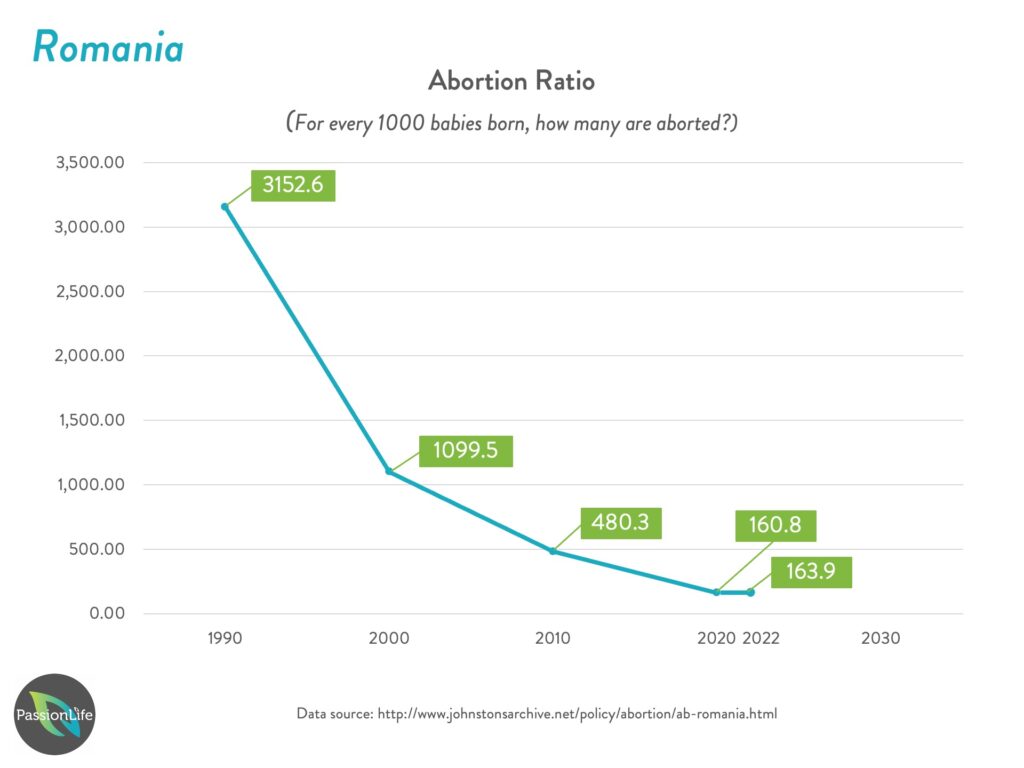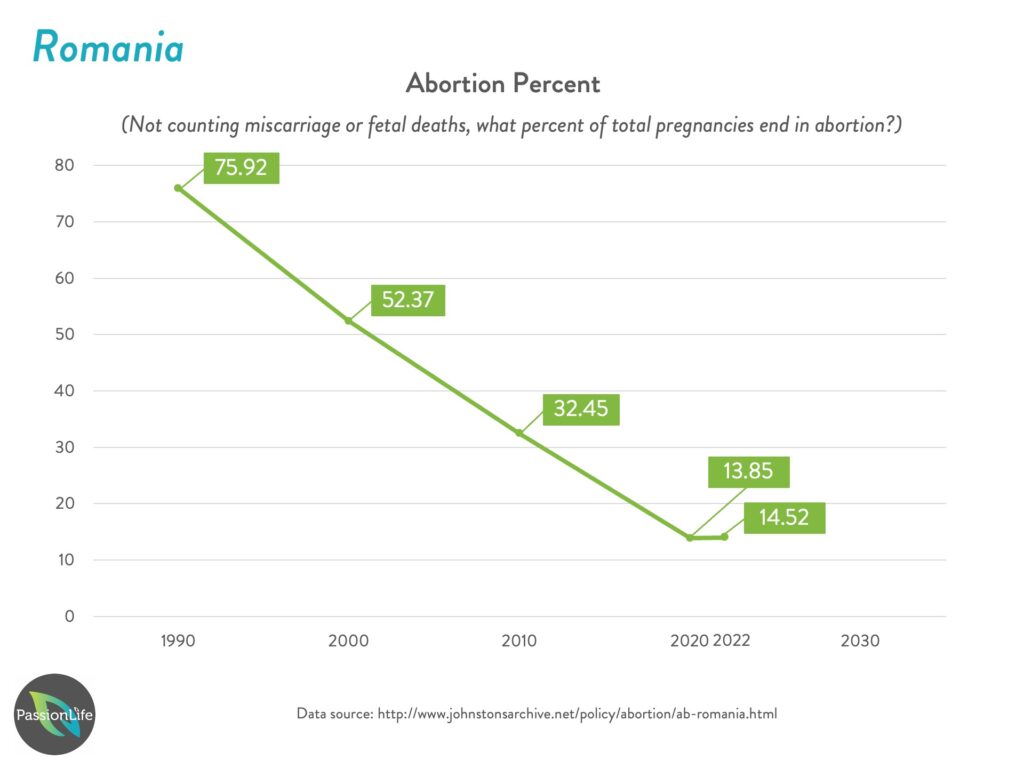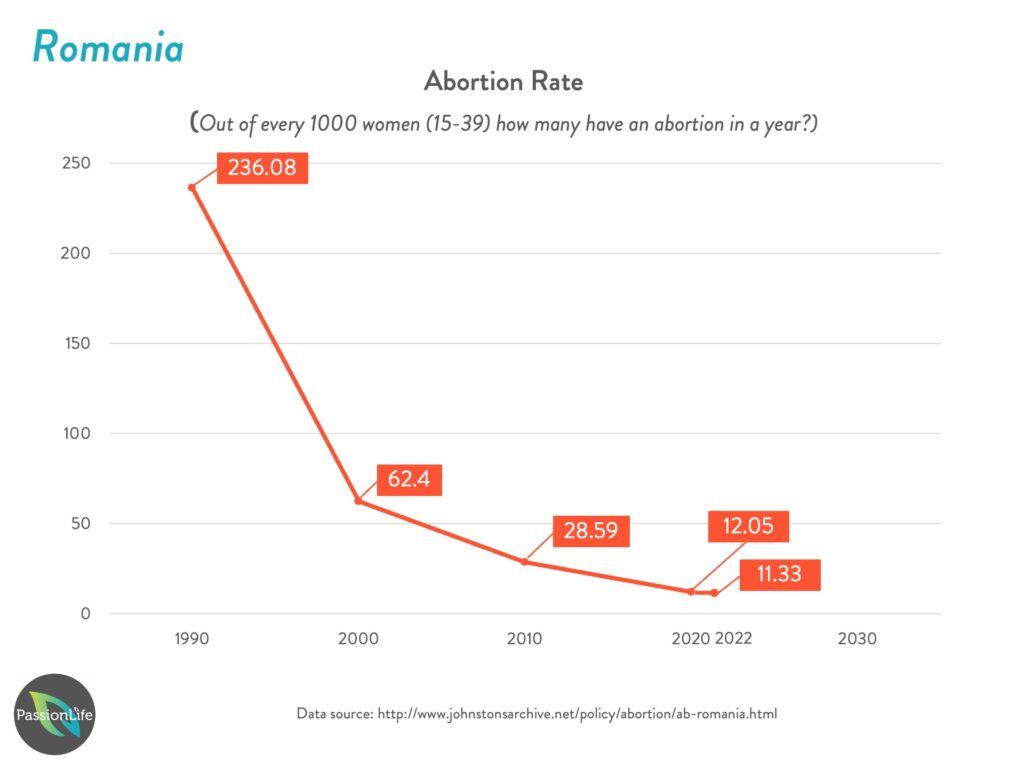Right before COVID hit, I was in Romania introducing myself and my team to a few pastors and presenting to them the four questions that seem to, in other parts of the world, lead to a movement in which the Christians begin to treasure human life, reject abortion, bring the gospel of God’s forgiveness to the guilt and grief of abortion, and begin to see people rescue mothers and couples, one mother at a time, in their neighborhoods. Now this is our chance to go back there and see if we can be a part of a movement that trains hundreds of thousands of people all over Romania to stand for life. I’m particularly excited about that. I’m hopeful for Romania because they have a particularly painful history.
 If you know anything about Romania, you’ll know that there was a time in the early 20th century where Romania was a prosperous oil country and this made them very rich. They were a democratic country but through a series of events they gave rise to the dictator Nicolaus Ceausescu in the 1960s. Here is a picture of me in Romania standing in Revolutionary Square in front of the central government building run by the Communist Party.
If you know anything about Romania, you’ll know that there was a time in the early 20th century where Romania was a prosperous oil country and this made them very rich. They were a democratic country but through a series of events they gave rise to the dictator Nicolaus Ceausescu in the 1960s. Here is a picture of me in Romania standing in Revolutionary Square in front of the central government building run by the Communist Party.
 This is a picture of that dictator, Nicholas Ceausescu, giving his last speech before the people finally overthrew him.
This is a picture of that dictator, Nicholas Ceausescu, giving his last speech before the people finally overthrew him.
Part of what gives Romania such a tragic history is that Ceausescu had a, what I would call a demonic, policy regarding the unborn. He actually outlawed abortion during his time. Why is that a bad thing? It certainly doesn’t sound like it’s demonic to me. But you have to understand that what was his motive was not your motive in mind to uphold the equal rights of all people born and unborn.
His motive was to enforce his need to have more people that could serve in his army and to serve the agenda of the state. He needed more widgets. So he passed some of the most oppressive laws in history which resembled some of what happened in China when they had the one child policy.
In his case, he would require women to be examined and to identify those who were pregnant. He investigated those who had miscarriages to make sure they were not lying. He fined unmarried people for not being good citizens and getting married and having children. Those were the kind of oppressive laws that the people lived under. When they overthrew Ceausescu, the first expression of that liberation was to legalize abortion. As a result of that, they suffered some of the worst abortion rates in the history of the world. So my going to Romania is to see if we can continue to see the church there stand for life and change the culture.
 Here’s the most remarkable thing. Romania was once the worst of the worst in terms of the unborn. Now it’s becoming one of the best of the best. I want to show you some statistics. This shows what we call the abortion ratio. And it means that for every 1,000 babies born it shows how many of them were also aborted.
Here’s the most remarkable thing. Romania was once the worst of the worst in terms of the unborn. Now it’s becoming one of the best of the best. I want to show you some statistics. This shows what we call the abortion ratio. And it means that for every 1,000 babies born it shows how many of them were also aborted.
In the early 90s, right after Ceausescu was overthrown and people were expressing their freedom through abortion, for every 1,000 babies that were born another 3,152 were aborted. These are numbers I have never seen or heard of anywhere in history. But currently they’re down to 163 babies that are aborted for every 1,000 that are born. That’s quite a remarkable turnaround.
 This is the abortion percent. That means that not counting miscarriages or natural fetal deaths, what percent of total pregnancies end in abortion. In the early 90s, right after the fall of the dictator, 75.92 or 76 percent of all pregnancies ended in abortion that is now down to 14% over the last 30 years or so. That’s quite a remarkable step of progress.
This is the abortion percent. That means that not counting miscarriages or natural fetal deaths, what percent of total pregnancies end in abortion. In the early 90s, right after the fall of the dictator, 75.92 or 76 percent of all pregnancies ended in abortion that is now down to 14% over the last 30 years or so. That’s quite a remarkable step of progress.
 This is called the abortion rate, and this means out of every 1,000 women between 15 and 39, largely the the years that women have babies, how many of those women will have an abortion in a given year. In the early 90s, it was 236 out of every 1,000 that would have an abortion during that year. Now it’s down to 11.
This is called the abortion rate, and this means out of every 1,000 women between 15 and 39, largely the the years that women have babies, how many of those women will have an abortion in a given year. In the early 90s, it was 236 out of every 1,000 that would have an abortion during that year. Now it’s down to 11.
These are some remarkable signs of progress in Romania over the last 30 or so years. My time here in Romania right now is to see if we can supercharge that process through the church and continue to turn Romania from the worst case scenario into an example of what needs to happen throughout Europe. We are here to plant the flag of truth within this rebel fortress, as C.S. Lewis called it, and stand for life without apologies and with great compassion and care. Thanks for joining us in the effort.
